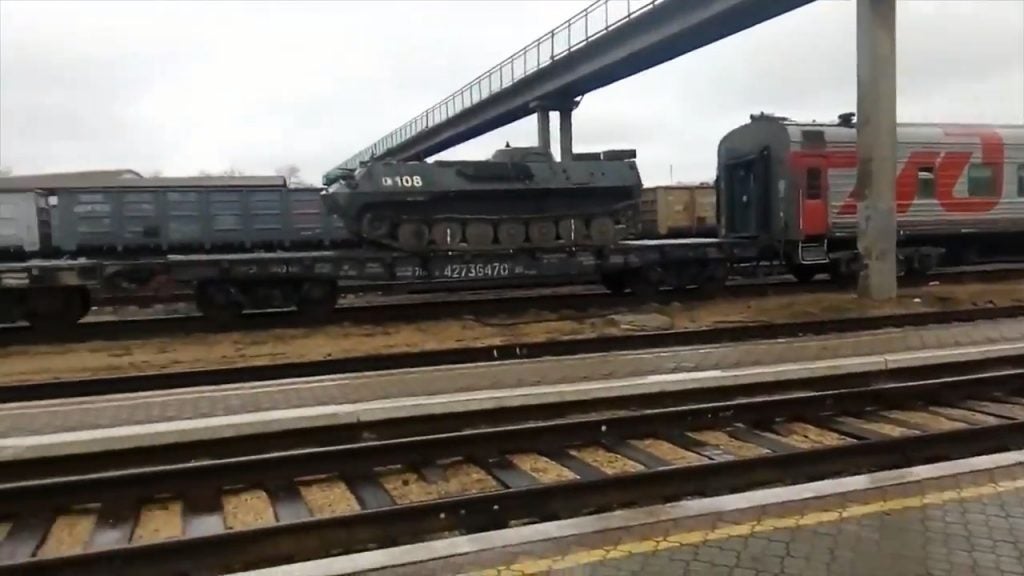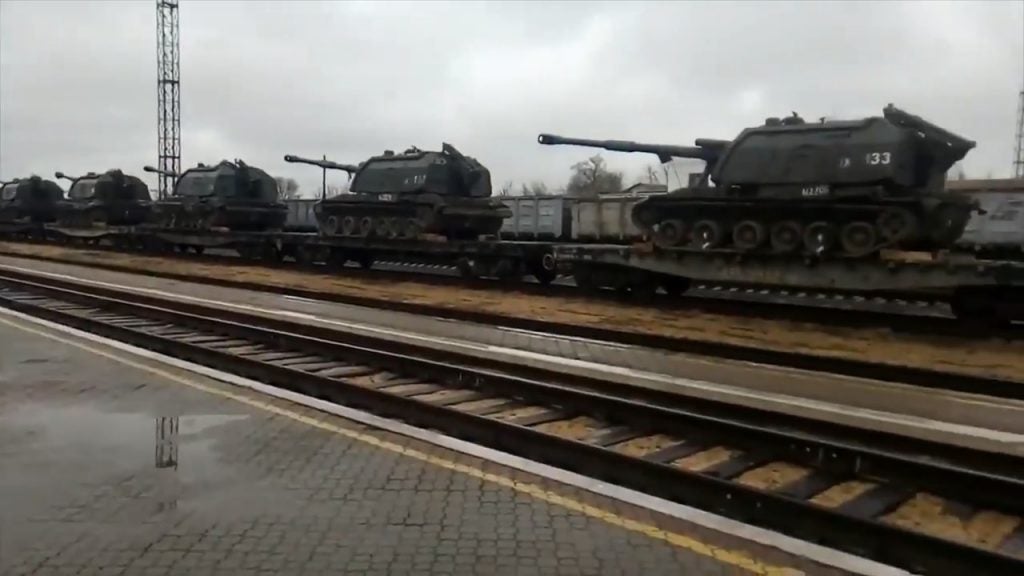Russia Rejects Latest Donbass Ceasefire Proposal As Russian Military Vehicles Stream Into Crimea
The head of Ukraine’s delegation to the Trilateral Contact Group on Ukraine has announced that the Russian delegation has refused a proposal for observance of a “full and comprehensive ceasefire” in the Donbass starting at midnight 1 April local time. In a Facebook post by the delegation, its head, former President of Ukraine Leonid Kravchuk said that he did not understand “why the Russian delegation does not consider it necessary to focus on saving people’s lives”.
The rejection of the ceasefire proposal comes as videos recently uploaded to social media show movement of Russian military vehicles into Crimea, including infantry fighting vehicles, artillery and utility trucks. The footage suggests a reinforcement of Russian hardware in the occupied region is taking place, as part of a broader build-up of forces on Ukraine’s northern, eastern and southern borders.
The buildup of forces comes amidst a time of increased tensions along Ukraine’s Line of Contact, following the death of four Ukrainian soldiers and the injury of two more in a 26 March attack by pro-Russian fighters using mortars, automatic grenade launchers and heavy machine guns. While small scale violations of the Minsk Agreement ceasefire by pro-Russian fighters are constant (the pro-Russian fighters also accuse the Ukrainian military of the same), it is rare for attacks to cause so many casualties at once.
Videos recorded by Crimean locals and circulated widely show Msta-S self-propelled howitzers and BMP-3 infantry fighting vehicles being transported by train into Crimea, alongside utility trucks. While the Russian government has previously announced that it would be establishing a permanent base for the VDV’s 56th Airborne Assault Regiment on the peninsula alongside downsizing it from a Brigade, these vehicles could also be in the process of being moved into large military vehicle storage facilities constructed on the island since its 2014 invasion by Russia, given that they aren’t commonly found in the VDV inventory.

Regardless of what they’re doing on the peninsula, the movements in Crimea and on the border certainly come across as signalling during the spring fighting season in the Donbass. Previous years have seen localized offensives by pro-Russian fighters around this time of the year, alongside movements of Russian military formations near the Russia-Ukraine border.
At a special meeting of Ukraine’s parliament, the commander in chief of Ukraine’s military, Colonel-General Ruslan Khomchak said:
“As of March 30, 2021, some 28 battalion tactical groups of the enemy are held along the state border of Ukraine in the temporarily occupied territories of Ukraine and the Autonomous Republic of Crimea, namely in Briansk, Voronezh, Rostov and on the territory of the temporarily occupied Crimea. But recently from different regions. Russia, under the guise of control exercises for the winter period of combat readiness exercises and general preparation for the future joint strategic exercises Zapad-2021 (West 2021), the Russian armed forces are gradually increasing troops near the state border of Ukraine in the north, east and south.”
While the General has said that the General Staff is preparing for “any scenario”, for now, the most visible movements are in the diplomatic dimension. German Chancellor Angela Merkel and French President Emmanuel Macron have called on Russian President Vladmir Putin to begin new Normandy Format talks on the implementation of the Minsk 2 ceasefire. The mandate of the OSCE Special Monitoring Mission to Ukraine was also extended today, hours before its expiration. The mandate of the ceasefire monitoring mission now expires on 31 March 2022.

